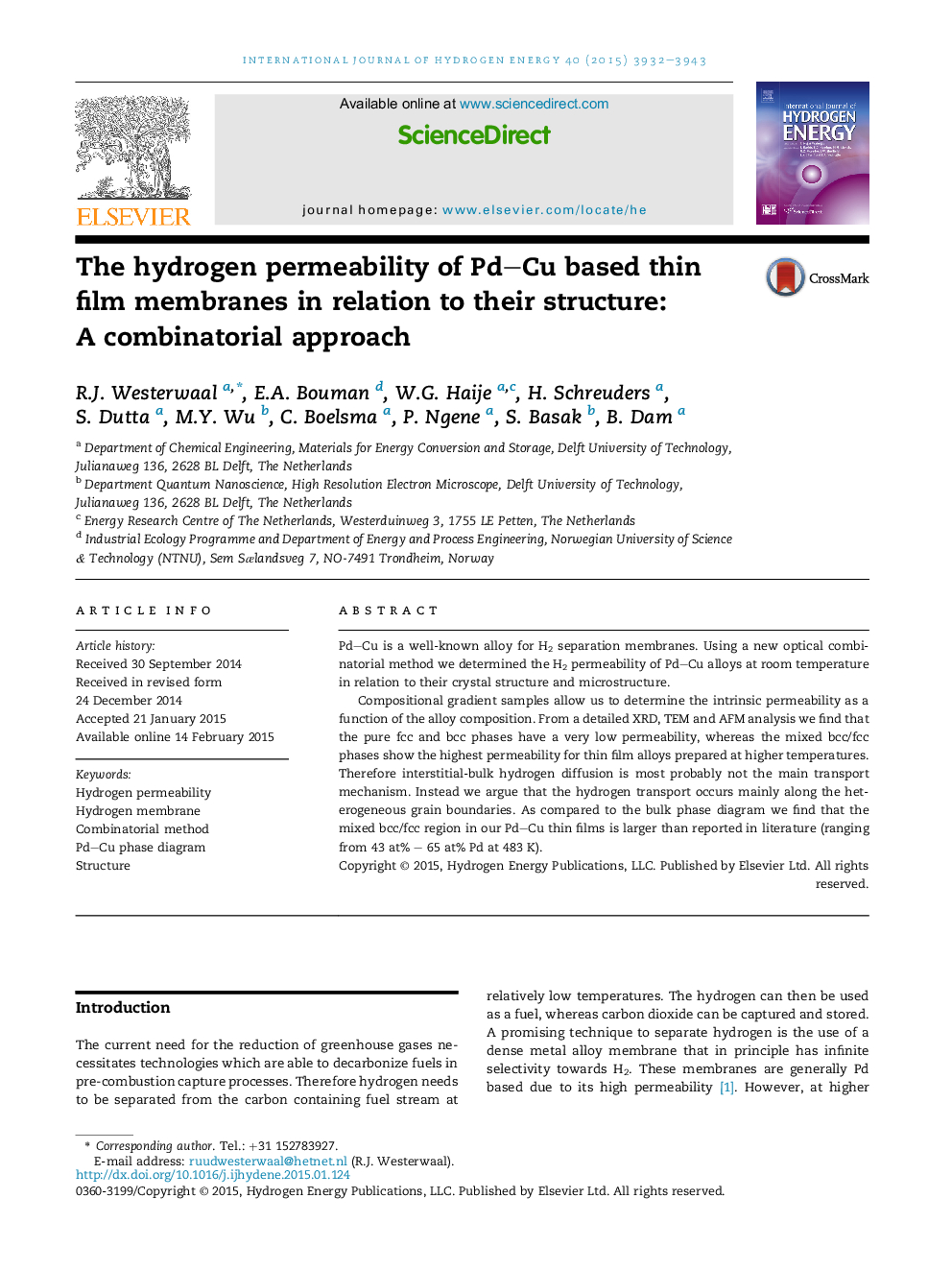| Article ID | Journal | Published Year | Pages | File Type |
|---|---|---|---|---|
| 1275820 | International Journal of Hydrogen Energy | 2015 | 12 Pages |
•We use a new optical combinatorial method to determine the H2 permeability.•Unexpectedly, the mixed bcc–fcc region shows the highest permeability.•The mixed bcc–fcc region in our Pd–Cu thin films is much larger as compared to literature.•We propose that hydrogen transport occurs along heterogeneous grain boundaries.
Pd–Cu is a well-known alloy for H2 separation membranes. Using a new optical combinatorial method we determined the H2 permeability of Pd–Cu alloys at room temperature in relation to their crystal structure and microstructure.Compositional gradient samples allow us to determine the intrinsic permeability as a function of the alloy composition. From a detailed XRD, TEM and AFM analysis we find that the pure fcc and bcc phases have a very low permeability, whereas the mixed bcc/fcc phases show the highest permeability for thin film alloys prepared at higher temperatures. Therefore interstitial-bulk hydrogen diffusion is most probably not the main transport mechanism. Instead we argue that the hydrogen transport occurs mainly along the heterogeneous grain boundaries. As compared to the bulk phase diagram we find that the mixed bcc/fcc region in our Pd–Cu thin films is larger than reported in literature (ranging from 43 at% – 65 at% Pd at 483 K).
